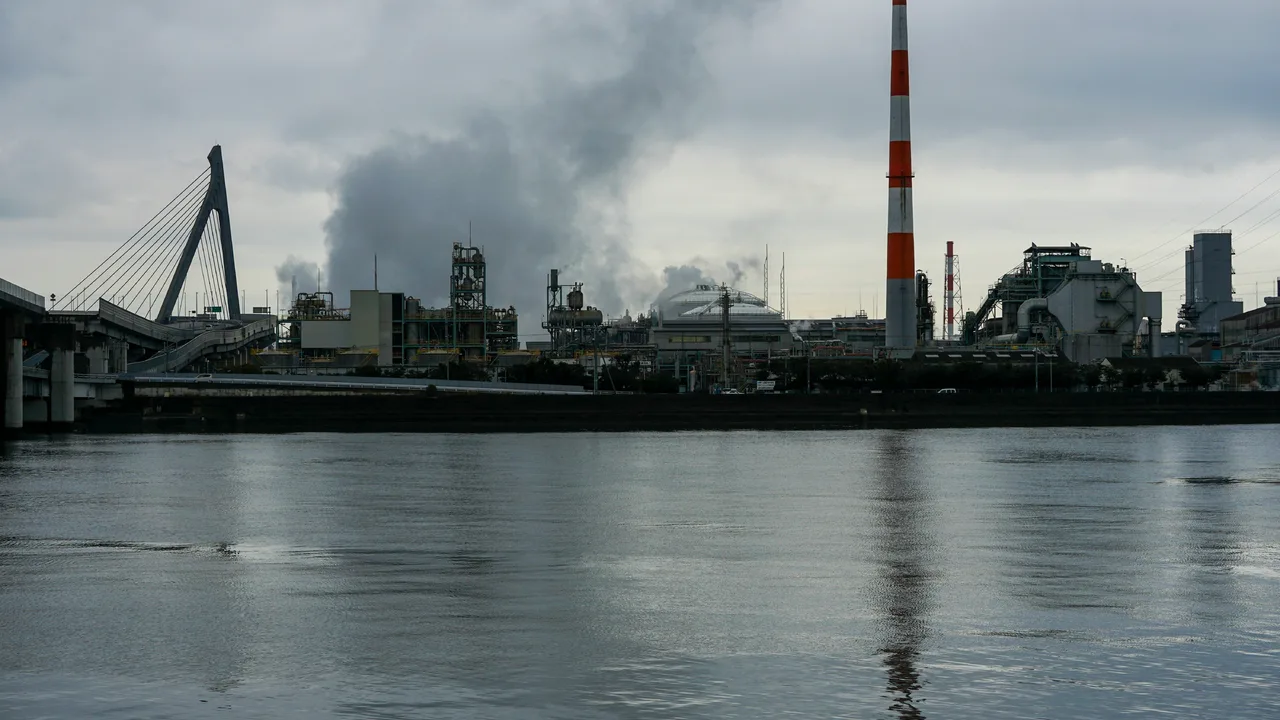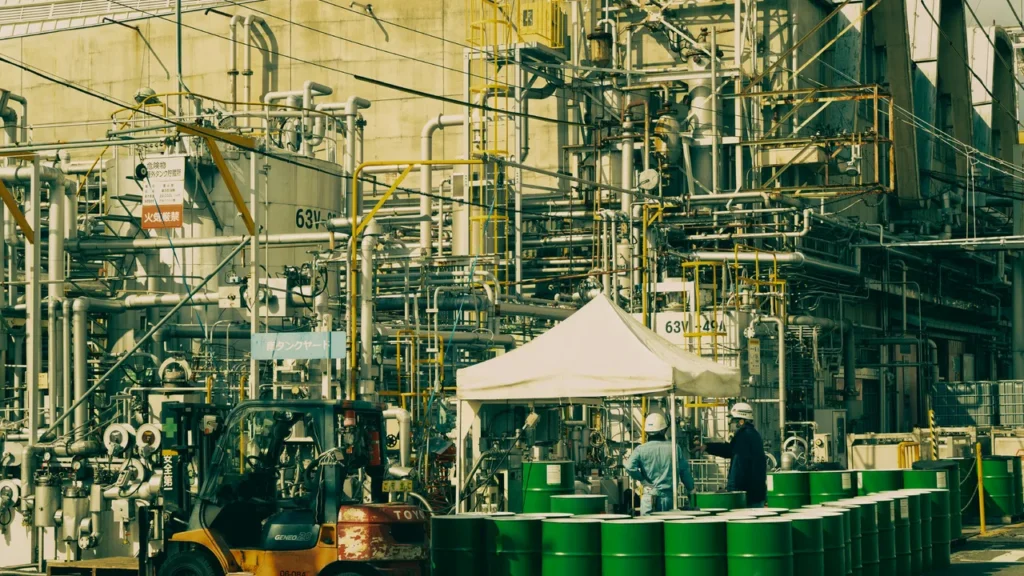The global economy is powered by the combined strength of manufacturing and energy sectors — two industries that act as the engine behind industrial sectors GDP. From powering factories to driving exports, these sectors are at the core of every country’s economic growth. Without them, modern infrastructure, innovation, and industrial development would simply not exist.
Introduction — The Backbone of the Global Economy
Throughout history, nations with strong manufacturing and energy foundations have experienced sustained prosperity. These two pillars of the industrial sectors GDP contribute not only to production and employment but also to trade balance and technological advancement. They create a ripple effect across the economy — when factories produce more and energy remains affordable, every other sector benefits.
The relationship between industrial output and GDP has become even more important in the 21st century. Global competition, digital transformation, and renewable energy transitions are reshaping how countries build economic resilience and ensure long-term growth. Understanding how these industrial sectors fuel global GDP provides insights into the world’s current and future financial health.
Understanding the Role of Industrial Sectors in GDP
What Defines the Industrial Sector
The industrial sector encompasses activities like manufacturing, energy production, mining, and utilities. Together, they form the productive backbone of the economy, responsible for converting raw materials into finished goods and ensuring steady energy supply. Economists refer to the combined value of these activities as the industrial sectors GDP — a key measure of economic productivity and stability.
Industrial GDP reflects how efficiently a nation transforms resources into marketable products and services. The higher the industrial output, the stronger a country’s economic foundation becomes. For instance, China’s industrial sector contributes roughly 40% of its GDP, while advanced economies like the United States maintain around 18% industrial contribution — yet both are leaders in innovation and export capacity.
Measuring Industrial Sectors GDP
The measurement of industrial sectors GDP is based on the total value added from production and manufacturing processes, excluding the cost of intermediate goods. It is calculated by summing up industrial output, productivity, and market prices of goods produced within a given period.
In practical terms, manufacturing output, energy generation, and infrastructure investment are tracked through national statistics agencies and international organizations like the World Bank and IMF. This data helps governments and investors understand the balance between resource utilization and overall economic growth.
| Region | Industrial Sectors GDP Share | Main Contributors |
|---|---|---|
| Asia-Pacific | 37% | Manufacturing, Electronics, Energy |
| Europe | 25% | Automotive, Steel, Renewable Energy |
| North America | 21% | Machinery, Oil & Gas, Technology |
| Rest of World | 17% | Mining, Textiles, Agriculture |
Manufacturing as a Driver of Economic Growth

The Engine of Production and Exports
Manufacturing has long been regarded as the heartbeat of industrial sectors GDP. It not only produces the goods needed for domestic consumption but also generates foreign exchange through exports. Countries like Germany, Japan, and South Korea have built their national wealth on manufacturing excellence, demonstrating how production strength directly correlates with economic growth.
For example, the automotive, electronics, and steel industries collectively account for more than 25% of global manufacturing GDP. These industries are interconnected through massive supply chains that employ millions of workers and drive innovation through research and development. The more advanced a country’s manufacturing ecosystem, the more resilient its economy becomes during downturns.
Innovation and Productivity Gains
The evolution of technology continues to push manufacturing productivity to new heights. Automation, artificial intelligence, and robotics have made production lines more efficient, allowing factories to increase industrial output while reducing costs. This digital transformation not only increases GDP but also enhances a nation’s competitive edge in global markets.
Countries that invest heavily in research and development, such as Japan and Germany, consistently achieve higher output per worker — a key factor behind their stable industrial GDP figures. Innovation has become a multiplier for industrial sectors GDP, helping economies transition from traditional manufacturing to smart, data-driven industries.
Employment and the Multiplier Effect
Beyond productivity, manufacturing is a major source of employment. Each job in the manufacturing sector supports several others across the supply chain — from logistics and construction to services and maintenance. Economists call this the “multiplier effect.”
According to the World Economic Forum, for every manufacturing job created, an additional 1.4 jobs emerge in other industries. This direct link between employment and economic growth illustrates how critical manufacturing remains for inclusive development and long-term prosperity.
Energy Sector’s Critical Influence on GDP
The Foundation of Industrial Output
The energy sector serves as the backbone of modern civilization. From powering factories and offices to fueling transportation networks, energy availability determines the capacity of industrial sectors GDP. When energy prices are stable and supply is reliable, industries thrive — but when shortages occur, production and growth suffer.
For instance, during the 2021 global energy crisis, many nations experienced factory shutdowns and reduced industrial output. This disruption highlighted how essential energy stability is for maintaining GDP growth. The connection between energy consumption and production capacity is clear: economic strength relies on affordable and sustainable power.
Transition to Renewable Energy and Economic Implications
As the global economy transitions toward renewable sources, the energy sector is undergoing a transformation that will redefine the structure of industrial sectors GDP. Solar, wind, hydro, and nuclear energy are not just environmental solutions — they are also economic catalysts. Investment in green energy stimulates job creation, promotes innovation, and ensures long-term economic growth.
Countries like China, the United States, and Denmark are leading this transition. The growth of renewable energy capacity has become a key driver of industrial development and trade competitiveness. Moreover, renewable energy technology manufacturing — such as solar panels and wind turbines — directly contributes to higher industrial output, creating a sustainable cycle of progress.
Global Case Studies
Energy-intensive economies like Saudi Arabia, Russia, and Nigeria heavily depend on oil and gas exports for GDP contribution. This reliance, however, exposes them to global price fluctuations. Conversely, nations investing in renewable infrastructure — such as Germany and South Korea — are diversifying their industrial bases, reducing vulnerability and enhancing the stability of their industrial sectors GDP.
In Africa and Southeast Asia, expanding electricity access is unlocking new economic opportunities. Industrialization in these regions is accelerating as energy infrastructure improves, highlighting how access to power remains a cornerstone of development and economic growth.
Interconnection Between Manufacturing and Energy
Symbiotic Relationship
The connection between manufacturing and energy is mutually reinforcing. Manufacturing depends on energy for production, while energy demand is largely driven by manufacturing output. This interdependence forms the backbone of industrial sectors GDP. When one sector grows, it amplifies demand and productivity in the other.
For example, as nations increase production of electric vehicles and green technology, their energy consumption rises — especially electricity. In turn, this growth in demand encourages investment in renewable energy facilities, which feeds back into the manufacturing sector through reduced energy costs and innovation in production processes.
Impact on Global Supply Chains
The 2021 energy crisis revealed the fragility of the global supply chain. Factories worldwide faced production halts due to power shortages and rising fuel costs. This disruption caused a noticeable dip in global industrial output, impacting GDP across both developed and emerging economies. To mitigate such risks, industries are now investing in energy efficiency, decentralized grids, and local manufacturing ecosystems.
Technological Integration
The rise of Industry 4.0 has integrated smart grids, data analytics, and automation into both manufacturing and energy operations. These technologies enable factories to optimize energy use, reduce emissions, and enhance productivity. The synergy between digital innovation and physical production has elevated the performance of industrial sectors GDP globally.
Industrial Sectors GDP in Global Context
Developed vs. Emerging Economies
Developed nations maintain steady industrial GDP through advanced technologies, high capital investment, and efficient infrastructure. Emerging economies, however, are showing faster growth in industrial output due to rapid urbanization and lower labor costs. The gap between the two groups is narrowing as industrialization spreads across Asia, Africa, and Latin America.
| Region | Industrial Sectors GDP Share (2024) | Growth Forecast (2030) |
|---|---|---|
| OECD Economies | 22% | +2.1% |
| BRICS Nations | 34% | +4.5% |
| Emerging Markets (Others) | 18% | +3.8% |
Trends and Forecasts
Global industrial sectors are expected to expand steadily over the next decade, with advanced manufacturing and renewable energy playing central roles. According to World Bank estimates, manufacturing will continue to represent around 16% of global GDP, while energy-related industries will gradually grow due to electrification and green investments.
The integration of sustainability and digitalization into industrial strategies is creating new opportunities for growth. By 2030, countries that successfully balance these two priorities will dominate the global industrial sectors GDP rankings.
Policy and Investment Outlook
Governments worldwide are prioritizing industrial policy to strengthen national economies. From infrastructure funding to tax incentives, these measures aim to attract private investment and modernize industrial output. Programs like the European Green Deal and the U.S. Inflation Reduction Act highlight how industrial and energy policies are converging to fuel sustainable economic growth.
International collaboration remains essential. Multilateral organizations encourage nations to align industrial strategies with climate goals — ensuring that future GDP growth remains inclusive and environmentally responsible.
Challenges Affecting Industrial GDP
Supply Chain Disruptions
Recent years have shown that globalized supply chains are vulnerable to shocks. The pandemic, geopolitical tensions, and resource shortages have exposed weaknesses that directly affect industrial sectors GDP. Many companies are now reshoring production to stabilize their manufacturing networks and ensure resilience.
Inflation and Energy Price Volatility
Rising inflation and fluctuating energy costs pose ongoing challenges to the industrial sector. As input costs increase, profit margins shrink, leading to slower economic growth. Stable energy pricing and diversification of sources are key to sustaining industrial performance.
Sustainability and Regulatory Pressure
Governments are enforcing stricter environmental regulations to balance industrial productivity with sustainability. While this may initially increase costs, it drives innovation in clean technology, which can enhance long-term industrial output. The shift toward eco-friendly manufacturing and renewable energy will shape the future of industrial sectors GDP.
The Future of Industrial Sectors GDP
Smart Manufacturing and Green Energy
The future lies in combining digital technology with sustainable practices. Smart factories powered by renewable energy sources are emerging worldwide. Artificial intelligence, IoT sensors, and robotics are transforming the efficiency of industrial output, reducing waste while boosting productivity.
Regional Shifts and New Economic Leaders
Asia will continue to lead industrial expansion, while Africa and Latin America will experience rising contributions to industrial sectors GDP due to investments in infrastructure and energy. Collaboration between developed and developing countries will be crucial to achieving balanced global growth.
The Long-Term Outlook
Looking ahead, the link between manufacturing, energy, and GDP will remain inseparable. Industrial resilience, technological innovation, and sustainability will define which economies thrive in the coming decades. The combined strength of these sectors ensures that industrialization remains the cornerstone of global economic growth.
Conclusion — Industrial Strength as Global Economic Fuel
Manufacturing and energy sectors together represent the driving force behind industrial sectors GDP. Their combined contributions sustain employment, innovation, and global competitiveness. As nations transition toward cleaner and smarter production, the foundation of the world economy will continue to evolve — but its reliance on these industrial engines will remain constant.
By fostering sustainable growth, investing in technology, and ensuring energy stability, the world can secure a prosperous industrial future for generations to come.
For further reading about GDP concepts, visit Wikipedia’s overview on Gross Domestic Product.



